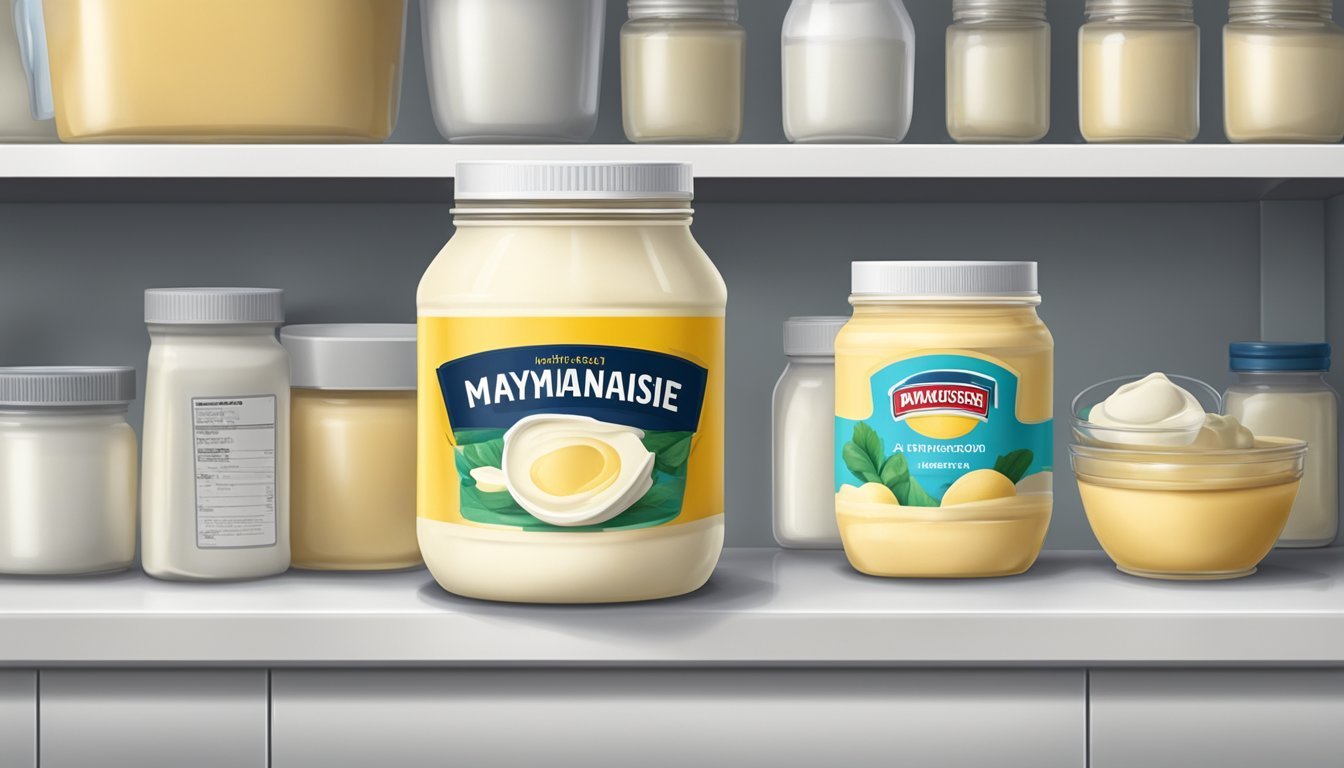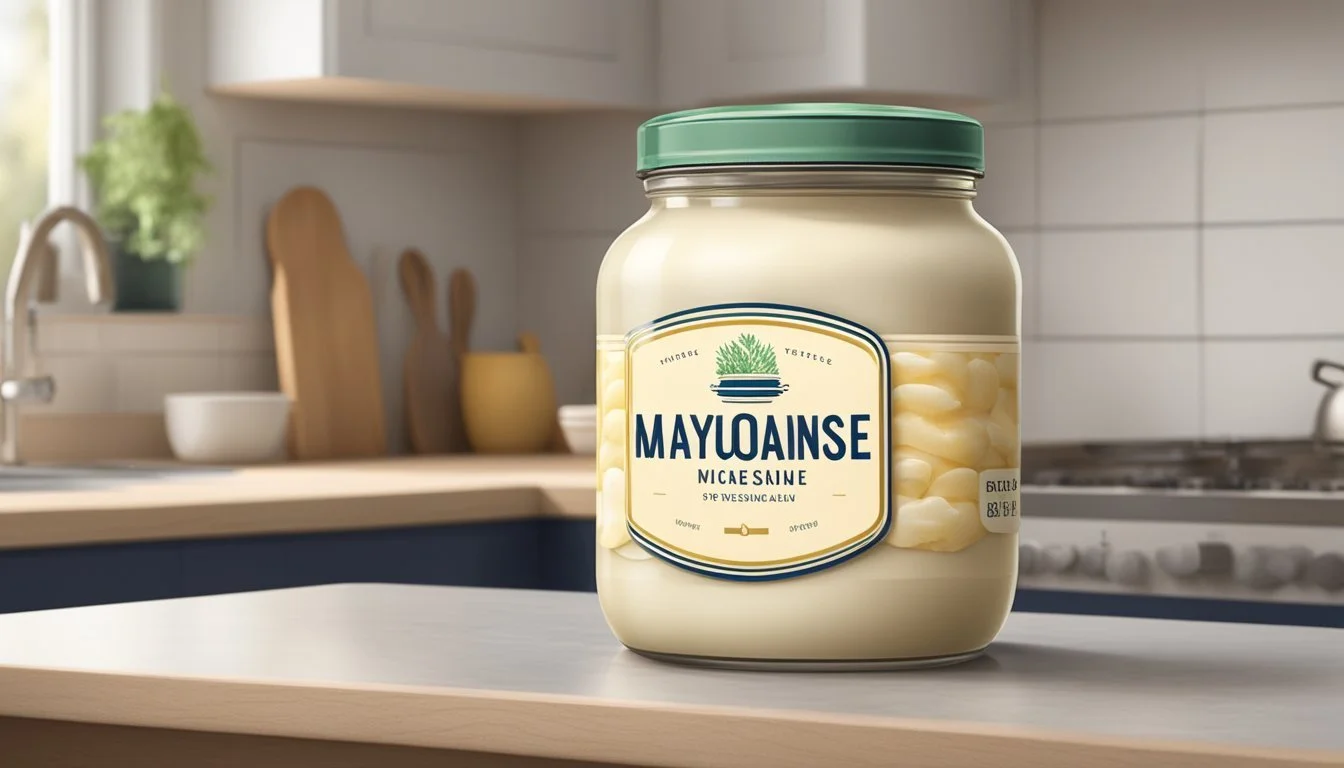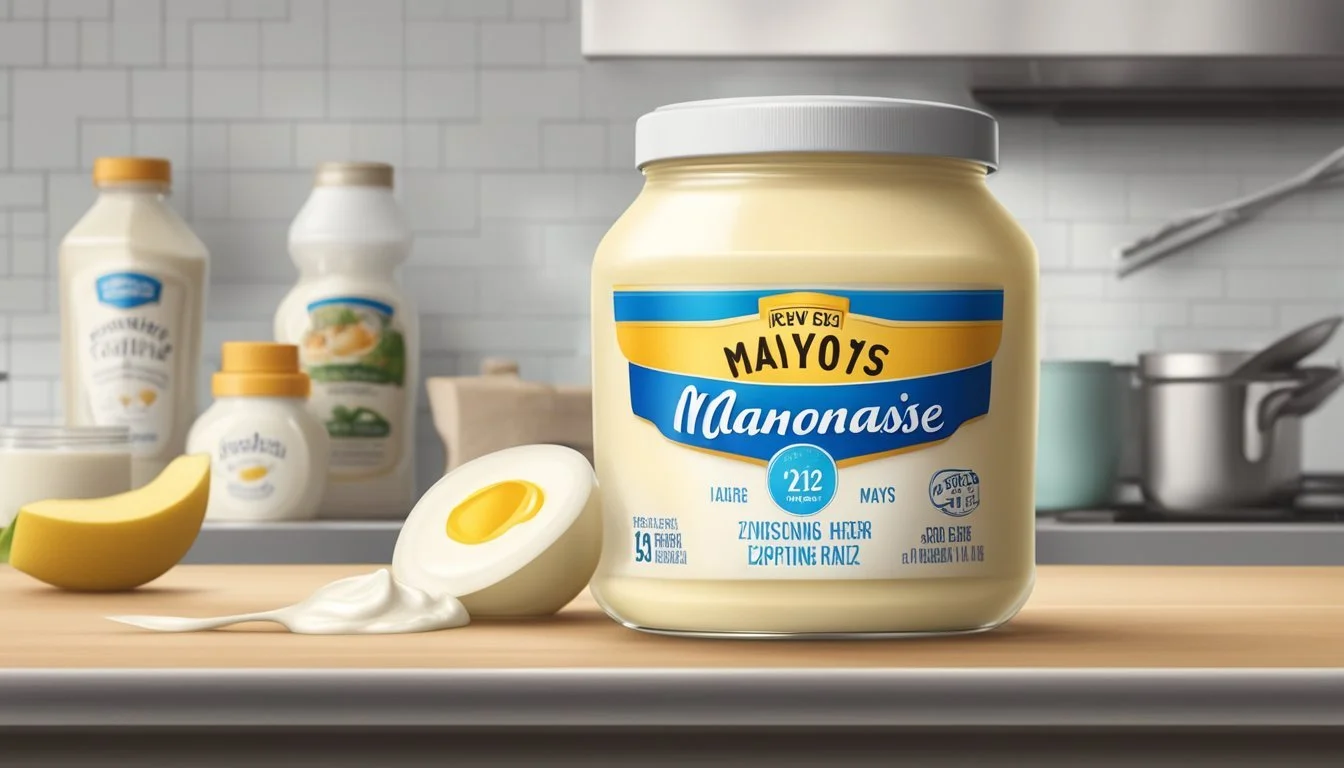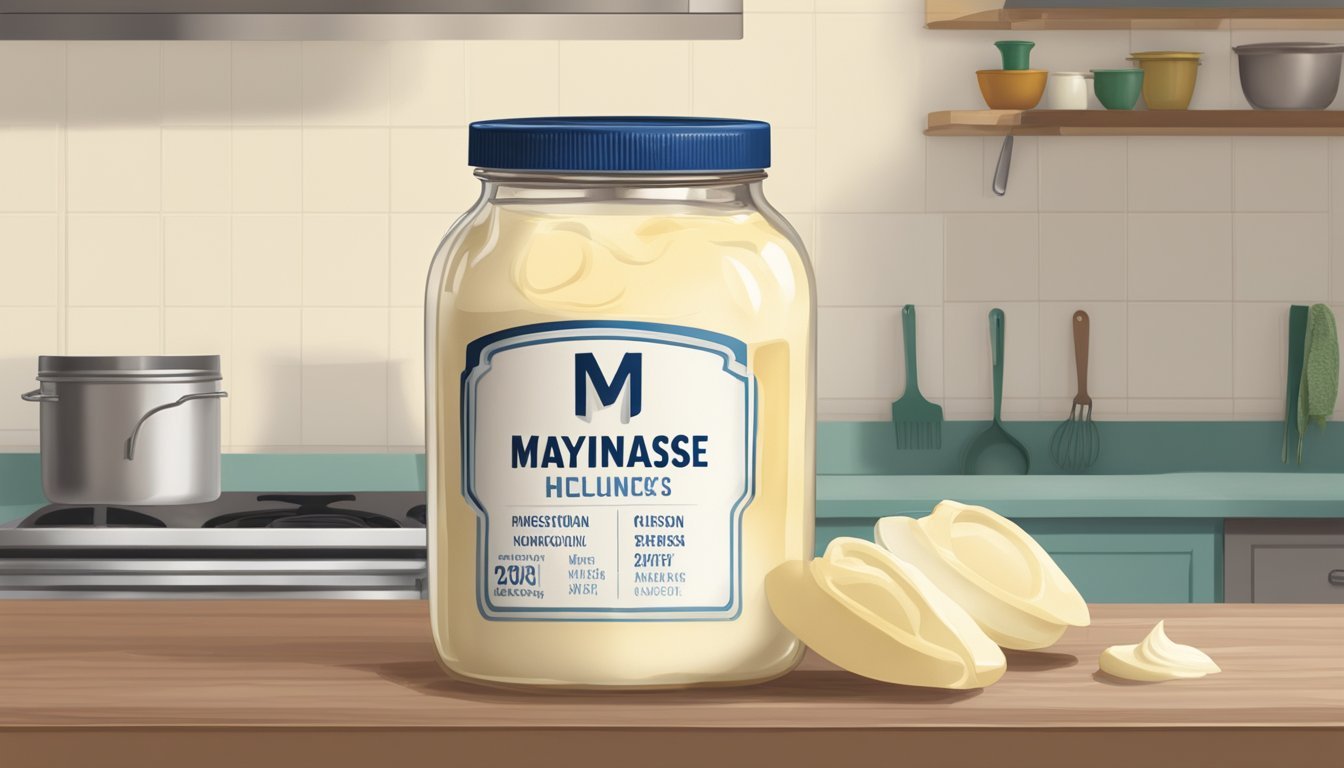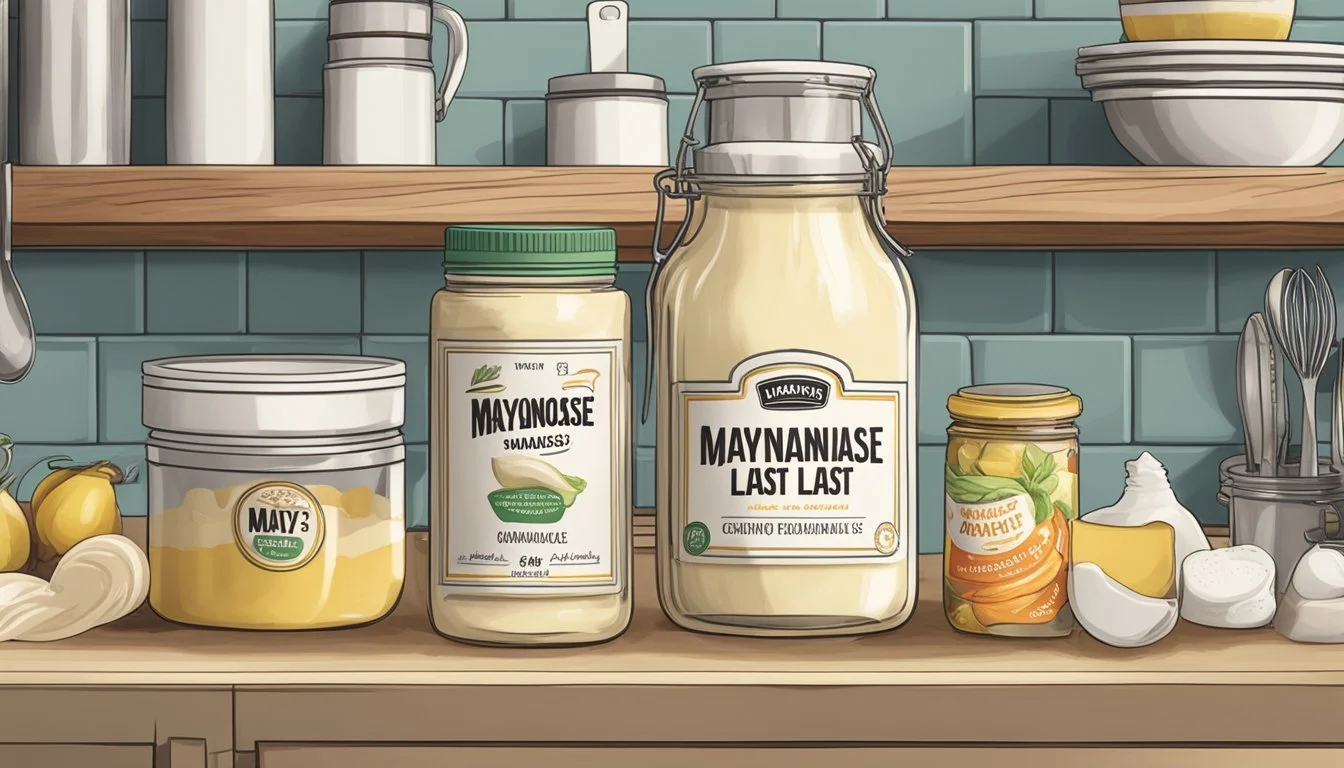How Long Does Mayonnaise Last?
Understanding Shelf Life and Storage Tips
Mayonnaise, a staple condiment in many households, has a varying shelf life that depends on several factors including whether it is store-bought or homemade, and its storage conditions. Typically, an unopened jar of commercial mayonnaise can remain shelf-stable for 3 to 4 months past its 'best by' date when stored in a pantry. Its longevity can extend up to a year if the jar remains unopened and is kept in the refrigerator.
Once opened, the shelf life of mayonnaise shortens significantly. Generally, opened store-bought mayonnaise is safe to consume for up to two to three months when appropriately refrigerated. Homemade mayonnaise, which often lacks the preservatives found in commercial varieties, has a shorter refrigerator lifespan of roughly one week.
Preservation of mayonnaise's quality and safety post-opening is highly dependent on maintaining a consistently cool temperature. Refrigeration is crucial to prevent the growth of bacteria and spoilage. It is advised to discard mayonnaise that has been left out at room temperature for an extended period, as harmful bacteria can proliferate, making it unsafe to consume.
Understanding Mayonnaise
When discussing the shelf life of mayonnaise, it's crucial to consider its ingredients, the distinction between homemade and store-bought varieties, and the role that preservatives and acid play in preservation.
Ingredients and Types
Mayonnaise is an emulsion typically made from oil, egg yolks, and an acid, such as vinegar or lemon juice. Additional ingredients like mustard or salt may be added for flavor and stability. There are several types of mayonnaise, varying based on the oil used or added flavors.
Traditional Mayonnaise: Egg yolks, oil, and vinegar or lemon juice
Mustard Mayonnaise: Traditional ingredients plus mustard
Aiolis and Flavored Variations: Including garlic or other flavor infusions
Homemade vs. Store-Bought Mayonnaise
Homemade mayo typically contains fresh egg yolks and lacks preservatives, resulting in a shorter shelf life compared to store-bought mayonnaise. Store-bought mayonnaise often contains additional stabilizers and preservatives, allowing it to last longer even after opening.
Homemade Mayonnaise: Fresh ingredients, no preservatives, refrigerate immediately
Store-Bought Mayonnaise: Longer shelf life, preservatives included
Role of Preservatives and Acid
Preservatives such as salt, and acids like vinegar or lemon juice, not only contribute to the flavor profile of mayonnaise but also serve as natural preservatives that can extend shelf life by creating an environment less conducive to bacterial growth. As such, they are fundamental components in both homemade and commercial mayonnaise formulations.
Acid: Vinegar or lemon juice lower the pH, making it difficult for bacteria to thrive
Preservatives: Salt and commercial preservatives help mayonnaise remain safe for consumption over an extended period.
Shelf Life Determinants
The longevity of mayonnaise hinges on several key factors, including how it is stored, the relevance of its expiration date, and whether the jar remains sealed or has been opened. Understanding these elements can help in maximizing the shelf life of mayonnaise.
Impact of Storage Conditions
The storage conditions of mayonnaise play a pivotal role in preserving its freshness. When stored in a cool, dry pantry, an unopened jar of mayonnaise can retain its quality for 3-4 months beyond the expiration date labeled on the packaging. Refrigeration extends this timeframe: an unopened jar that is consistently kept refrigerated can potentially last up to a year. Once opened, mayonnaise should be refrigerated promptly and typically remains good for up to one month.
Expiration Date Significance
The expiration date or best by date on a mayonnaise jar provides a guideline for optimal quality. However, it's not an absolute indicator of safety. Mayonnaise that is past its expiration date may still be consumable if it has been stored properly and shows no signs of spoilage, which include changes in smell, texture, or appearance. Consumers should always scrutinize mayonnaise for these spoilage signs before using it past the labeled date.
Opened vs. Unopened Jar
The shelf life of mayonnaise varies significantly between an opened and an unopened jar. An unopened jar benefits from its airtight seal, which shields the contents from moisture and contaminants. This seal contributes to a longer shelf life compared to an opened jar, which, once exposed to air and potential contaminants, has a shorter shelf life. After opening, maintaining this product in the refrigerator is imperative to preserve its quality and safety.
Proper Storage and Handling
To ensure the longevity and safety of mayonnaise, proper storage and handling are crucial. By maintaining the right temperature, preventing contamination, and understanding the effects of freezing, consumers can maximize the shelf life of their mayonnaise.
Refrigeration and Temperature Control
Mayonnaise should always be stored in the fridge after opening. It is imperative to keep the refrigerator at a consistent temperature between 35°F (1.7°C) and 40°F (4.4°C) to inhibit bacterial growth. An opened jar of mayonnaise will generally last about 2 to 3 months when stored correctly under these temperature conditions.
Ideal Refrigeration Range:
Minimum: 35°F (1.7°C)
Maximum: 40°F (4.4°C)
Preventing Contamination
Good hygiene practices are essential when handling mayonnaise to avoid contamination. Always wash hands thoroughly before contact, use clean utensils, and do not introduce any food particles to the mayonnaise container. To reduce the risk of spoilage:
Wash hands before use
Use clean utensils only
Avoid mixing with food residue
Freezing Mayonnaise
Freezing mayonnaise is generally not recommended as it can affect the emulsion and texture. However, if one decides to freeze mayonnaise, it should be noted that thawed mayonnaise might separate and become less palatable. When considering freezing mayo, use it for cooked applications where the change in texture is less noticeable.
Freezing: Not recommended
Possible texture changes if frozen
Identifying Spoilage
When inspecting mayonnaise for spoilage, it is essential to pay attention to any changes in color, texture, and smell, as these are strong indicators that the mayonnaise is no longer safe to consume.
Changes in Color and Texture
An initial sign of spoilage in mayonnaise is a noticeable change in color. Fresh mayonnaise typically has a bright, white color, and any shift towards a yellowish or brownish hue suggests it may be spoiled. Along with color changes, the texture of the mayonnaise can signal spoilage. It should have a creamy, homogenous consistency. Separation, where the oil divides from the rest of the ingredients, is another clear indicator.
Odor and Taste
The sense of smell is a powerful tool to identify spoiled mayonnaise. A fresh jar has a subtle, mild odor, whereas spoiled mayonnaise may have a putrid smell. If the mayonnaise smells off, it is best to discard it, as it indicates the presence of harmful bacteria such as Salmonella. To check the taste, one should only sample a tiny amount if the product passes the visual and smell tests. Spoiled mayonnaise will often have an off taste, dramatically different from its original flavor profile.
Mold and Separation
Visible mold growth—which may manifest as fuzzy spots of various colors—is a definite sign that mayonnaise is unsafe for consumption. The growth of mold indicates significant bacterial activity, increasing the risk of food poisoning. Additionally, as mentioned earlier, separation of oil can also point to spoilage, especially when the mayonnaise appears lumpy rather than smooth. Both are clear signs that the mayonnaise has expired, and it should not be consumed.
Health Considerations
When considering the shelf life of mayonnaise, understanding health considerations is crucial. Mayonnaise, especially when homemade, contains egg yolks that can increase the risk of foodborne illnesses if not handled properly.
Risk of Foodborne Illness
Consumption of mayonnaise that has gone bad or was improperly stored can lead to foodborne illnesses. Commercial mayonnaise often contains pasteurized eggs, reducing the risk of pathogens like Salmonella. However, the absence of preservatives in homemade mayonnaise, which often uses raw egg yolks, requires careful attention to storage and usage to prevent spoilage. Signs of spoilage include changes in color, texture, or an off smell. Discarding mayonnaise that shows these signs is necessary to ensure safety.
Egg-Based Mayonnaise Safety
The key to maintaining the safety of egg-based mayonnaise is proper storage. For commercial mayonnaise, which usually has a best-by date, it's generally safe to use up to one month beyond this date if kept refrigerated and shows no signs of spoilage. To reduce the risk of food poisoning, one should always store homemade mayonnaise that uses raw eggs or raw egg yolks at refrigeration temperatures and use it within a few days. For added safety, using pasteurized eggs or pasteurized egg yolks can make homemade mayonnaise preparation easier and safer.
Usage Tips
When incorporating mayonnaise into meals or striving to maintain its freshness, one should adhere to specific guidelines to ensure the condiment retains its flavor and creaminess.
Incorporating Mayonnaise in Meals
Mayonnaise is often used as a creamy base for salads and sandwiches. To enhance flavor profiles, it's essential to mix mayonnaise thoroughly into dishes.
Salad: It can act as a binding agent in potato, pasta, or egg salads.
Sandwiches: Spread evenly on bread to add moistness and a rich taste.
Optimal Conditions for Freshness
To ensure mayonnaise remains fresh, it's indispensable to store it properly after opening.
Refrigeration: Always refrigerate mayonnaise immediately after use to prolong freshness.
Airtight Container: Store in its original jar or an airtight container to prevent contamination.
By adhering to these tips, mayonnaise can contribute effectively to the menu items, preserving both taste and safety when one decides to consume it.
FAQs About Mayonnaise
This section responds to frequently asked questions about the storage, shelf life, and safety of mayonnaise, offering guidance from both common concerns and manufacturer recommendations.
Common Queries and Concerns
How long does mayonnaise last after opening?
Once opened, mayonnaise should generally be used within two months, provided it is stored in the refrigerator and kept tightly sealed. It's important not to double-dip utensils to maintain freshness.
Is mayonnaise perishable?
Yes, mayonnaise is a perishable condiment due to its egg content. It should be stored away from heat sources and consumed before the expiry date for optimal flavor and safety.
Can mayonnaise be stored at room temperature?
Once opened, mayonnaise should not be stored at room temperature for more than a few hours. Unopened mayonnaise can last in the pantry for 3-4 months past its expiration date, but refrigeration is recommended for extended shelf life.
What happens if I consume expired mayonnaise?
Consuming expired mayonnaise, especially if it has changed in smell, texture, or appearance, can pose a risk of foodborne illness.
Is the 'best by' date the same as the expiration date?
No, the 'best by' date is about quality, not safety. Mayonnaise is usually safe to use up to one month past this date if stored properly.
How do I know if mayonnaise has gone bad?
Spoiled mayonnaise may have an off smell, a change in texture, or a sourer, tangy taste. Discoloration or mold are also clear indications that mayonnaise should not be consumed.
Can the shelf life of mayonnaise compare to that of ketchup?
No, ketchup and mayonnaise have different compositions. Ketchup typically has a longer shelf life due to its acidic nature and lower perishability.
Manufacturer Recommendations
What do manufacturers say about storing mayonnaise?
They recommend keeping unopened mayonnaise refrigerated, which can extend its shelf life up to a year. Once opened, it should remain refrigerated and used within two months.
How do manufacturers suggest you can maximize mayonnaise's shelf life?
They advise keeping it tightly sealed when not in use, stored in a cool place away from direct sunlight, and not to double-dip to prevent contamination.

